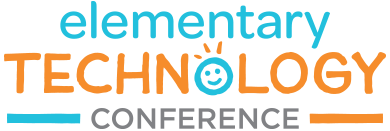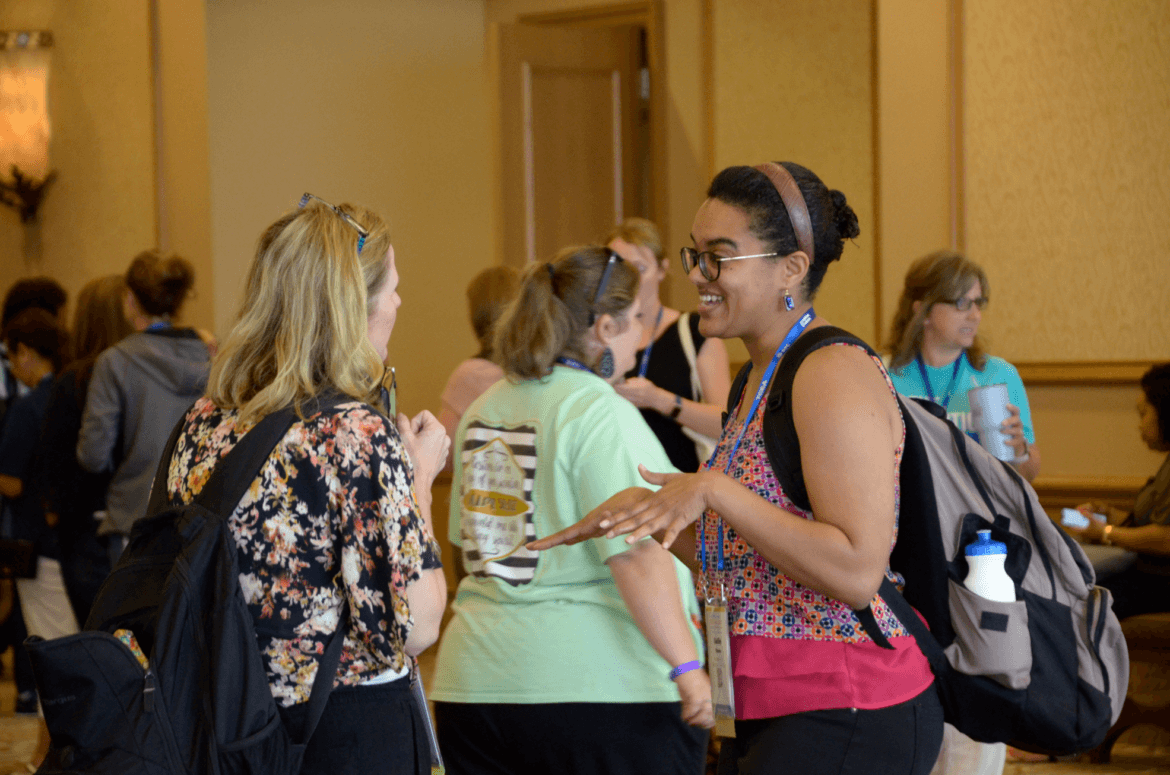The Elementary Technology Conference is over for another year and it was an amazing learning event! More than 1,000 dedicated educators from 11 states and two foreign countries gathered in Galveston, TX to learn new teaching practices and tools. If you weren’t able to attend, here are a few tidbits that you can implement in your classroom this next year.
First Things First
First off, elementary educators are AWESOME! We had a GooseChase scavenger hunt going and the conference center echoed with the sounds of people doing the hokey pokey and laughing at each other. I saw educators trying to make the longest continuous paper chain out of a single sheet of construction paper. Participants created magnetic slime and programmed robots and mastered Google and learned about the new ELAR TEKS. And in between all of the learning, there was fun and friendship and fabulous food. Now, on to the great ideas shared there.
Bitmoji Mojo
If you haven’t tried using emojis with your students, you (and they) are really missing out. Toni Hylander and Owen Nesbitt from Birdville ISD offered some great ideas for how to find them, how to create them, and how to use them for learning in this handout. I especially liked their recommendation for using bitmojis as a welcome to the classroom at the start of school. You can find their cute ideas for that on slide 15. For more on using emojis with Google, check out Diana Benner’s presentation.
Maker for Primary Students
If you’re interested in design thinking and makerspace in the primary classroom, check out this great handout from Jessica Varela from The Lamplighter School. She had some great tips for getting started, including beginning with an “elevated” creation station. The first task her students were given was to create something that moves. She includes lots of other ideas for working with paper, wood, cardboard, coding, tinkering, and more.
Vocabulary Development with Paper Slide Videos
TCEA’s own Diana Benner had some powerful ideas for vocabulary development using paper slide videos. Paper slides is a low-tech way to incorporate video and creativity in your classroom as students slide “papers to create a movie.” Diana recommends students first think about the meaning of their assigned vocabulary word and come up with three things they want their audience to know about the word. Then, using one piece of paper per slide, they draw pictures (no words allowed!) that illustrate what they want them to know. They also add a paper slide that gives the word and may choose to add a credit slide. Next, they write the script of what they are going to say during the video and practice it.
The Google-Minded Administrator
Tracy Willyard from Cedar Hill ISD shared how Google can make life easier for elementary administrators and help them save time. She shows how to streamline the work using Gmail, Forms, Docs, Sites, Classroom, and more. Ideas shared included meeting agenda, AUPs, PD programs, weekly updates, registration forms, master scheduling, inventory, lesson plan templates, and manuals/handbooks.
Affordable Augmented Reality
If you are just getting into AR, you will definitely want to see the resources provided by Amanda Smith from Lufkin ISD. She recommends you start by downloading four free apps: Google Expeditions, 3D Museum Viewer for MERGE Cube, Galactic Explorer/MERGE Cube, and AR Flashcards – Animal Alphabet. She also provides ideas for using augmented reality in the classroom and additional apps to provide to students.
More Resources
For other fabulous ideas and their accompanying handouts, check out this site to learn even more. And you can take a look at the Twitter hashtag #TCEA to find every more amazing ideas, even if you don’t have a Twitter account.
 If you weren’t able to join us this year, be sure to put next year’s conference on your schedule now. It will be held June 14-16, 2020 in Galveston again. You won’t want to miss it!
If you weren’t able to join us this year, be sure to put next year’s conference on your schedule now. It will be held June 14-16, 2020 in Galveston again. You won’t want to miss it!

